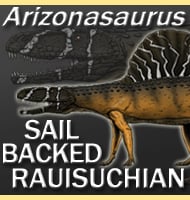Avalonnectes
In Depth Named after the legendary island of Avalon (and supposed resting place of King Arthur), Avalonnectes was a rhomaleosaurid plesiosaur. Aside from being related to the type genus of the group, Rhomaleosaurus, this meant that Avalonnectes is noted as being a genus of shorter necked plesiosaurs. Avalonnectes has been considered to be a more … Read more
